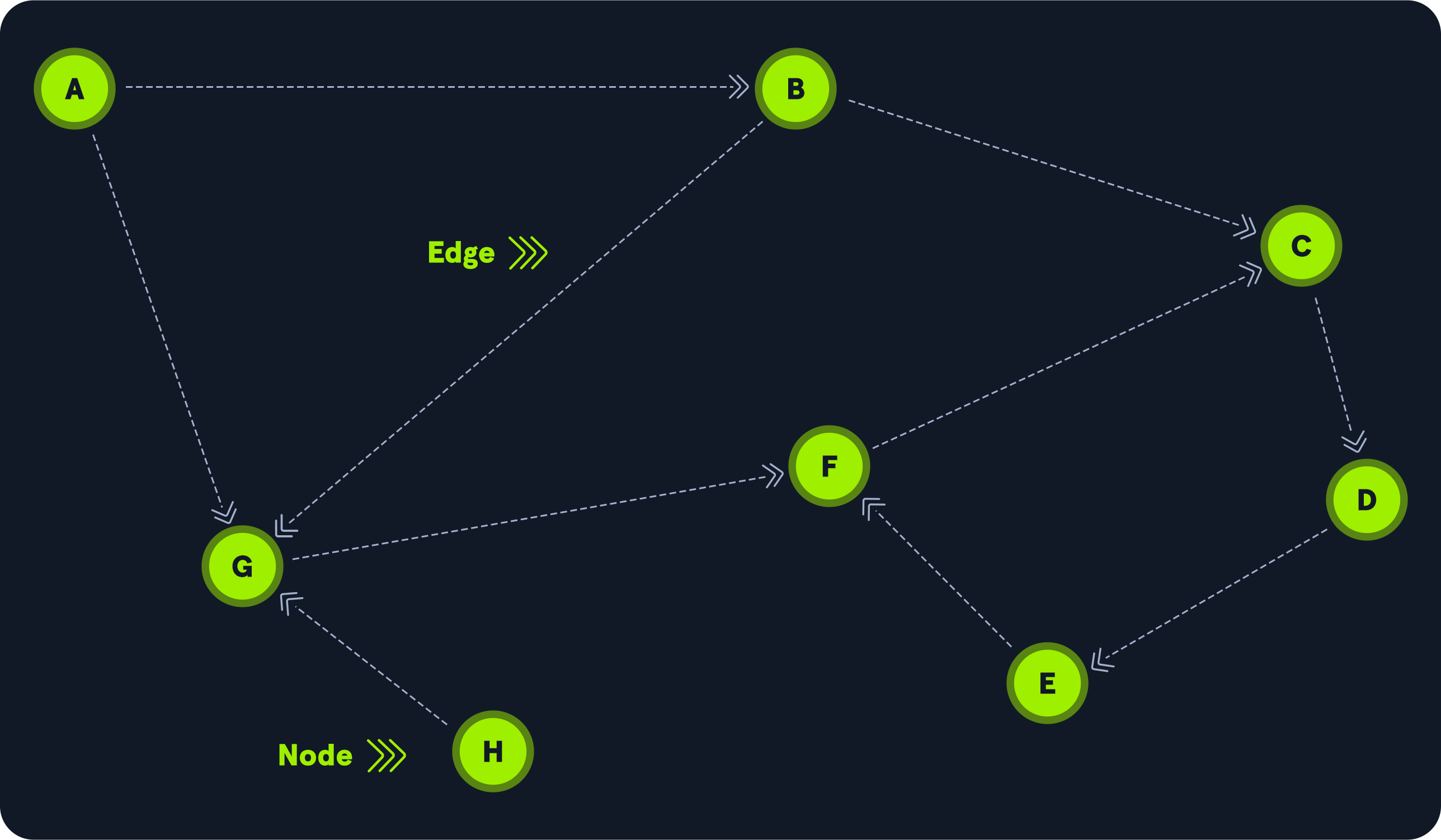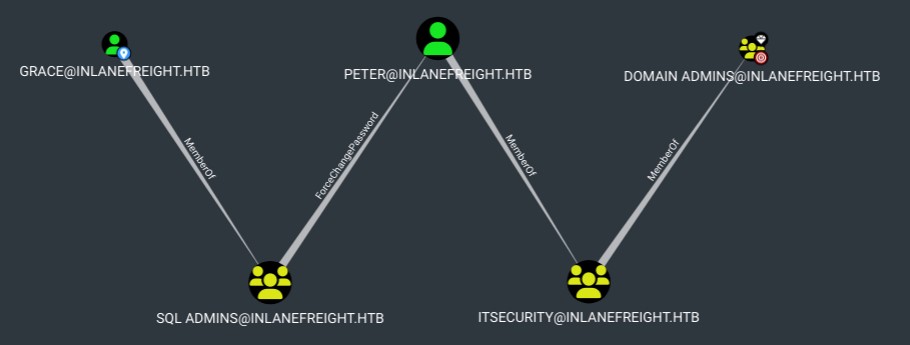Summary
This module introduces the BloodHound tool. We will learn how to gather and analyze data gathered using the SharpHound ingestor and how this information can be used as input to other tools during later parts of an AD-focused penetration test. In this module, we will cover:
- Enumerating key AD objects such as users, groups, computers, ACLs, and GPOs
- Enumerating AD trust relationships
- Analyzing BloodHound and other tool data
- AD enumeration from a non-domain joined Linux and Windows attack box as well as a compromised domain-joined host
- Extending BloodHound by writing custom Cipher queries
CREST CCT INF-related Sections:
- All sections
This module is broken down into sections with accompanying hands-on exercises to practice each of the tactics and techniques we cover. The module ends with a practical hands-on skills assessment to gauge your understanding of the various topic areas.
As you work through the module, you will see example commands and command output for the various topics introduced. It is worth reproducing as many of these examples as possible to reinforce further the concepts introduced in each section. You can do this in the Pwnbox provided in the interactive sections, Windows machines in a lab environment as directed, or your own virtual machine.
You can start and stop the module at any time and pick up where you left off. There is no time limit or "grading," but you must complete all of the exercises and the skills assessment to receive the maximum number of cubes and have this module marked as complete in any paths you have chosen.
The module is classified as "Medium." It assumes a working knowledge of Active Directory, the Linux and Windows command line, PowerShell, an understanding of information security fundamentals, and a firm grasp of AD enumeration processes and techniques.
A firm grasp of the following modules can be considered prerequisites for successful completion of this module:
- Introduction to Networking
- Linux Fundamentals
- Active Directory LDAP
- Active Directory PowerView
BloodHound Overview
Active Directory Access Management
Access management in Active Directory is complex, and it is easy to introduce vulnerabilities or bad practices in day-to-day configurations.
Attackers and defenders commonly have difficulty discovering or auditing all the accesses of a user or how these accesses are interconnected to give privileges to a user that are not supposed to exist.
Because the attack surface and the amount of data produced in Active Directory environments are highly complex and evolving, and because we needed a way to automate the collection and analysis of this data, @_wald0, @harmj0y, and @CptJesus created BloodHound.
Note: To understand more about Active Directory, we can look at these modules Introduction to Active Directory and Active Directory Enumeration & Attacks.
BloodHound Overview
BloodHound is an open-source tool used by attackers and defenders alike to analyze Active Directory domain security. The tool collects a large amount of data from an Active Directory domain. It uses the graph theory to visually represent the relationship between objects and identify domain attack paths that would have been difficult or impossible to detect with traditional enumeration. As of version 4.0, BloodHound now also supports Azure. Although the primary purpose of this module will be Active Directory, we will introduce AzureHound in the section Azure Enumeration.
Data to be utilized by BloodHound is gathered using the SharpHound collector, which is available in PowerShell and C#. We will discuss data collection in the following sections.
BloodHound Graph Theory & Cypher Query Language
BloodHound utilizes Graph Theory, which are mathematical structures used to model pairwise relations between objects. A graph in this context is made up of nodes (Active Directory objects such as users, groups, computers, etc.) which is connected by edges (relations between an object such as a member of a group, AdminTo, etc.). We will discuss nodes and edges further in another section, but let's do an example to see how BloodHound works.
The tool uses Cypher Query Language to analyze relationships. Cypher is Neo4j’s graph query language that lets us retrieve data from the graph. It is like SQL for graphs, and was inspired by SQL so it lets us focus on what data we want out of the graph (not how to go get it). It is the easiest graph language to learn by far because of its similarity to other languages and intuitiveness. We will discuss more about Cypher queries later in this module.
The below diagram shows two nodes, A and B. In this example, we can only go from node A to node B, not the other way.

This could simulate A as the user Grace and B as the group SQL Admins, the line between the two is the edge, which in this case is MemberOf. The next graphic show us that in BloodHound, where the user Grace is a member of the SQL Admins group.

Let's see a more complex relationship between nodes. The following graphic shows eight (8) nodes and ten (10) edges. Node H can reach node G, but no node has a direct path to node H. To get to node C from node A, we can hop to node G, move to node F, and then to node C, but that's not the shortest path. One of the BloodHound capabilities is to look for the shortest path. In this example, the shortest path from node A to node C is one hop through node B.

In the previous example, we used BloodHound to find that Grace is a member of SQL Admins, which is pretty simple to discover. We can use the Active Directory Users and Computers GUI or the net user grace /domain command. With only this information, we can conclude that Grace doesn't have any path to the Domain Admins group, but that is where BloodHound is much more helpful in helping us identify those relationships between nodes that are not easy to locate.
Let's use BloodHound as our map navigator and ask how to get from the user Grace to the Domain Admins group. Here's the result:

This means that Grace, as a member of the SQL Admins group, can change Peter's password. Authenticate with Peter's new password and perform operations as a member of the Domain Admins group. Although Peter is not a member directly, he is a member of a group that is.
BloodHound for Enterprise
The SpecterOps team that created BloodHound also created BloodHound Enterprise. An Attack Path Management solution that continuously maps and quantifies Active Directory Attack Paths. Ideal for enterprises that want to constantly monitor the different types of on-premises and cloud attack paths, prioritize their actions, obtain remediation guidance, and continuously measure their security posture.
The good thing about this project is that the BloodHound for Enterprise team uses a common library between the commercial and the FOSS project and introduces SharpHound Common: one code base from which both FOSS SharpHound and SharpHound Enterprise are built. This code base enables, among other things:
- Improved documentation.
- Improves the quality and stability of SharpHound for everyone.
Note: To learn more you can read: Introducing BloodHound 4.1 — The Three Headed Hound.
Moving On
Now that we have covered graph theory and how BloodHound works with nodes and edges to find the shortest paths, let's move on and collect some data that we can ingest into BloodHound and start manipulating.
Module Exercises
Throughout this module, you will connect to various target hosts via the Remote Desktop Protocol (RDP) to complete the exercises. We will provide any necessary credentials with each exercise, and the RDP connection can be made via xfreerdp from the Pwnbox as follows:
Connecting via RDP
[!bash!]$ xfreerdp /v:<target IP address> /u:htb-student /p:<password>
After logging in to the target host, all tools can be found in the C:\Tools directory.
Next Steps
In the following sections, we will see how to collect Active Directory information from Windows and Linux and how to analyze the information we collect.






